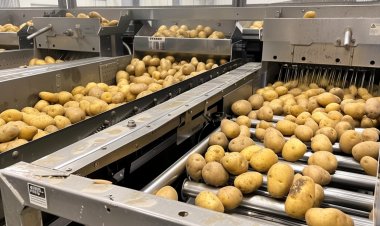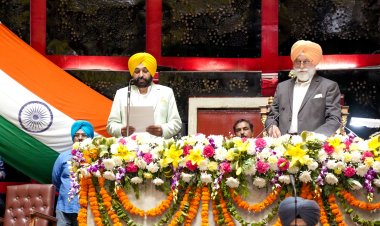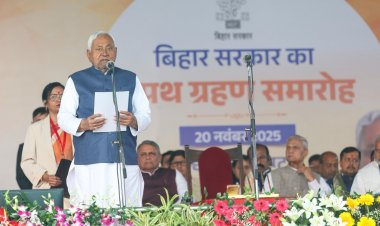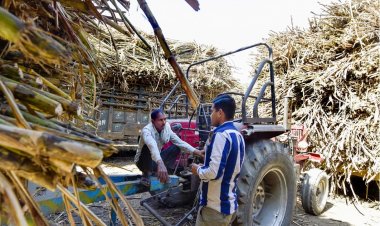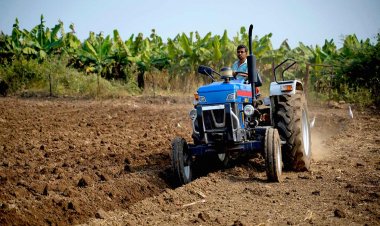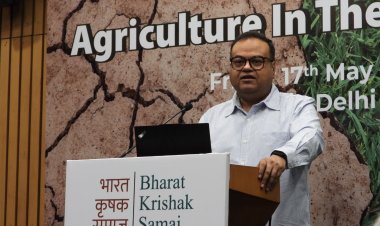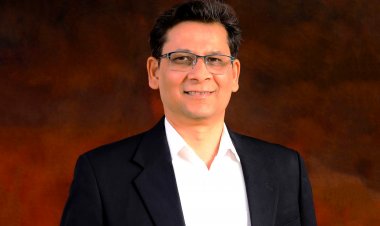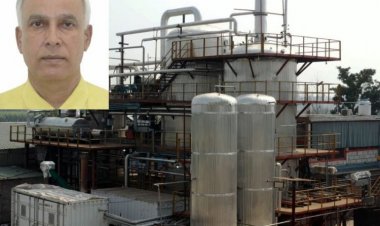Dr BR Ambedkar, Dalits and Panchayats: Sidelights from the Constituent Assembly Debate
What was uttered by BRA happened in reality as the functions of the panchayats reveal. If Dr Ambedkar has to be disapproved, panchayats have to be made an integral part of Indian federalism and just as the powers of the States and the Centre are distributed by the Constitution, the powers of the States and the Panchayats, too, have to be distributed.
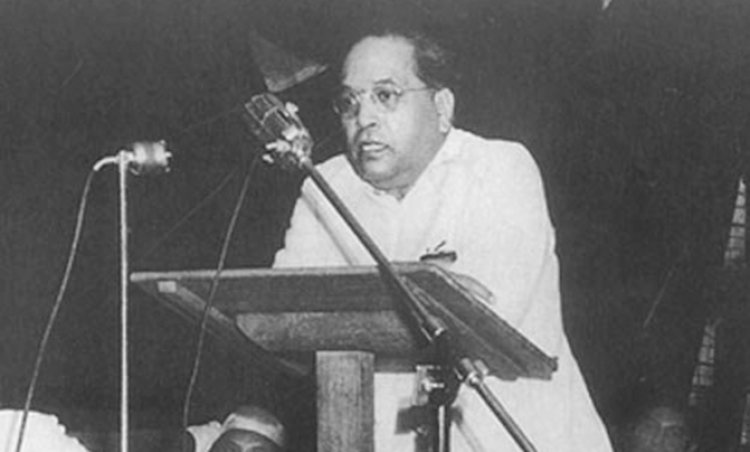
Introduction
Dr BR Ambedkar (BRA) was one the greatest sons of India who was not only a parliamentarian, scholar of repute and constitutionalist expert but also a crusader for dalits[1] in India. He struggled throughout his life for establishing a social order based on liberty, equality and universal brotherhood. This requires not only liberty and deliverance of the oppressed, depressed and suppressed, but also the establishment of such institutions as are not only democratic but also close to the masses as well as have adequate representation of women and vulnerable sections at various levels of government. In order to achieve this, decentralized rural governance[2] is also very important to create a proper socio-economic development environment for the holistic development of each and every individual and society.
From the above perspective, it is interesting to study what the views of BRA were on the inclusion of panchayats in the Constitution and how panchayats became part of the Constitution after the debate in the Constituent Assembly.
The present paper examines the above questions briefly so that the interest of scholars and researchers in this area increases and the reality among the people, particularly the intellectuals, is also brought to the fore as far as designating BRA against panchayats is concerned.
Constituent Assembly Debate and panchayats
On 4 November 1948, BRA, while moving a motion in the Constituent Assembly for consideration of the Draft Constitution of India, made certain observations about the village. He quoted Metcalfe, who described the villages as follows: “Dynasty after dynasty tumbles down. Revolution succeeds to revolution. Hindoo, Pathan, Mogul, Mahratta, Sikh, English, are all masters in turn but the village communities remain the same. In times of trouble they arm and fortify themselves: a hostile army passes through the country: the village communities collect their cattle within their walls, and let the enemy pass unprovoked.” (Jather, 1964, p. 35). After the above quote, he commented, “Such is the part the village communities have played in the history of their country. Knowing this, what pride can one feel in them? That they have survived through all vicissitudes may be a fact. But mere survival has no value. The question is on what plane they have survived. Surely on a low, on a selfish level. I hold that these village republics have been the ruination of India. I am, therefore, surprised that those who condemn provincialism and communalism should come forward as champions of the village. What is the village but a sink of localism, a den of ignorance, narrow-mindedness and communalism? I am glad that the Draft Constitution has discarded the village and adopted the individual as its unit.” (ibid. 1964, p. 35)
BRA’s above words in the Assembly triggered a debate on the issue of village panchayats. The views of some of the members on the comments of Dr Ambedkar are given below in order to understand how panchayats were placed in the Constitution.
Damodar Swarup Seth pleaded for local self-government. Prof SL Saksena endorsed the views of Mahatma Gandhi for village panchayats or village republics. HV Kamath also went for panchayats and uttered that if not Panchayati Raj, what remedy Dr Ambedkar suggested for the upliftment of villages. K Santhanam, while agreeing to some extent on the views of Dr Ambedkar, did not agree with his condemnation of the village panchayats and his statement that they were responsible for all the national disasters. RK Sidhwa observed, “This is a Constitution prepared for democracy in this country and Dr Ambedkar has negatived the very idea of democracy by ignoring the local authorities and villages ... Local authorities are the pivots of the social and economic life of the country and if there is no place for local authorities in this Constitution, let me tell you that the Constitution is not worth considering.” (ibid. 1964, p. 39)
Dr Monomohan Das, although not disagreeing with having village panchayats empowered, cautioned, “Unless and until our village people are educated, unless and until they become politically conscious, unless they become conscious of their civic rights and responsibilities and unless they become conscious of their rights and privileges, this Village Panchayat system will do more harm than good.” (ibid. 1964, p. 40)
Prof. NG Ranga pleaded in these words, “Do we want centralization of administration or decentralization? Mahatma Gandhi has pleaded over a period of thirty years for decentralization. We as Congressmen are committed to decentralization. Indeed, all the world is today in favour of decentralization.” (ibid. 1964, p. 41).
The views expressed by various members show that almost all members were for the inclusion of panchayats in the Constitution and therefore disagreed with the views of Dr Ambedkar.
On 22 November 1948, K Santhanam moved the following motion: “That after Article 31, the following new Article be added. 31A. The State shall take steps to organize village panchayats and endow them with such powers and authority as may be necessary to enable them to function as units of self-government.” This amendment was immediately assented to by Dr Ambedkar in these words: “I have nothing more to add.” In this way, the motion was adopted unanimously and Article 31A became Article 40 as the part of the Directive Principles of State Policy of the Constitution (ibid. 1964, p. 43).
It may be noted that BRA, who was criticizing panchayats, agreed to the motion moved by Santhanam for the inclusion of village panchayats in the Constitution.
Dr BR Ambedkar’s views on panchayats in 1932
It is curious why he did not speak for the weaker sections’ space in panchayats in the Constituent Assembly debate in 1948, when 16 years earlier on 6 October 1932, when the Bombay Village Panchayat Bill was discussed in the Bombay Assembly, he had favoured the policy of devolution with special provisions for the depressed classes.
To quote Dr Ambedkar: “I should like to say at once that I have no objection in principle to the policy of devolution, if it is found that the local boards of this Presidency are overburdened by the functions which are placed upon by the Local Board Act and if by reason of that they are unable to discharge their functions efficiently, then I say by all means institute village Panchayats so as to disburden the local boards.” (Moon, 1982, p. 106)
As far as the space for depressed classes is concerned, Dr Ambedkar commented: “The Bill provides that the village Panchayats shall be elected on the basis of adult suffrage both for males and females. ... but I should like to make it clear ... that speaking for the depressed classes, I have not the slightest hesitation in saying that adult suffrage is not sufficient for us. The Hon'ble Minister has forgotten that the depressed classes are in a minority in every village, a miserable minority, and assuming that he adopts adult suffrage, he will readily admit I am sure that adult suffrage cannot convert a minority into a majority. Consequentially, I am bound to insist that if these Panchayats come, there shall be special representation for the minorities. At any rate, there shall be special representation for the depressed classes ... I can never accept the principle of self-government for India unless I am satisfied that every self-governing institution has provision in it which gives the depressed classes special representation in order to protect their rights ..." (op. cit. p. 107)
Critique
In the beginning, Dr Ambedkar opposed the inclusion of panchayats in the Constitution. But when a number of members of the Constituent Assembly argued for panchayats and when Santhanan moved the motion for the inclusion of panchayats in the Directive Principles of State Policy, Dr.Ambedkar accepted it. The reason why Dr Ambedkar accepted village panchayats in the Directives Principles of State Policy might be that he might have read between the lines that since panchayats would be on the wishes of the State Governments, these institutions would not flourish or strengthen. And the provisions of Article 40 would largely be confined to the Constitution. The experiences of the functioning of panchayats after 1932 might have given enough of inputs to Dr Ambedkar that if panchayats were made part of the Directive Principles of State Policy, they would not be strengthened by political leaders and bureaucrats as they were not interested in making panchayats strong and pulsating institutions.
It is evident from the functioning of the panchayats after Independence that they could not play any significant role in the development and planning of the life of villagers after 1947. The leaders who argued and showed enthusiasm for the development of village panchayats during the debate in the Constituent Assembly had not shown any active participation in the development of panchayats for about a decade. (Jather, 1964, p. 45)
However, from the point of view of the author of this article, Dr Ambedkar should have argued for placing panchayats in Part IX of the Constitution and suggested to the Constituent Assembly to provide adequate space for vulnerable groups like SCs, STs and Women in these institutions. Had the power been given to marginalized groups as was given through the 73rd Constitutional Amendment Act after 43 years of the coming into force of the Constitution, their conditions would have been far better today. Dr Ambedkar might have seen the plight of marginalized groups in the panchayats in terms of using their powers and authority. So, he was averse to panchayats. But for this, he might have argued for capacity development support to elected representatives in general and marginalized groups in particular.
To conclude, what was uttered by BRA happened in reality as the functions of the panchayats reveal. If Dr Ambedkar has to be disapproved, panchayats have to be made an integral part of Indian federalism and just as the powers of the States and the Centre are distributed by the Constitution, the powers of the States and the Panchayats, too, have to be distributed. Panchayats should not be left at the mercy of the State Legislatures. Their powers have to be carved out in the Constitution.
(The author is a former officer of Indian Economic Service and expert in Local Governance.)
[1] Dalits denote depressed, suppressed and oppressed sections of rural India. Broadly, SCs, STs, most backward classes and women come under the dalit fold.
[2] Governance means collective action with the involvement of people, civil society, government and markets. Here decentralized rural local governance denotes governance through Panchayati Raj Institutions.



 Join the RuralVoice whatsapp group
Join the RuralVoice whatsapp group


















